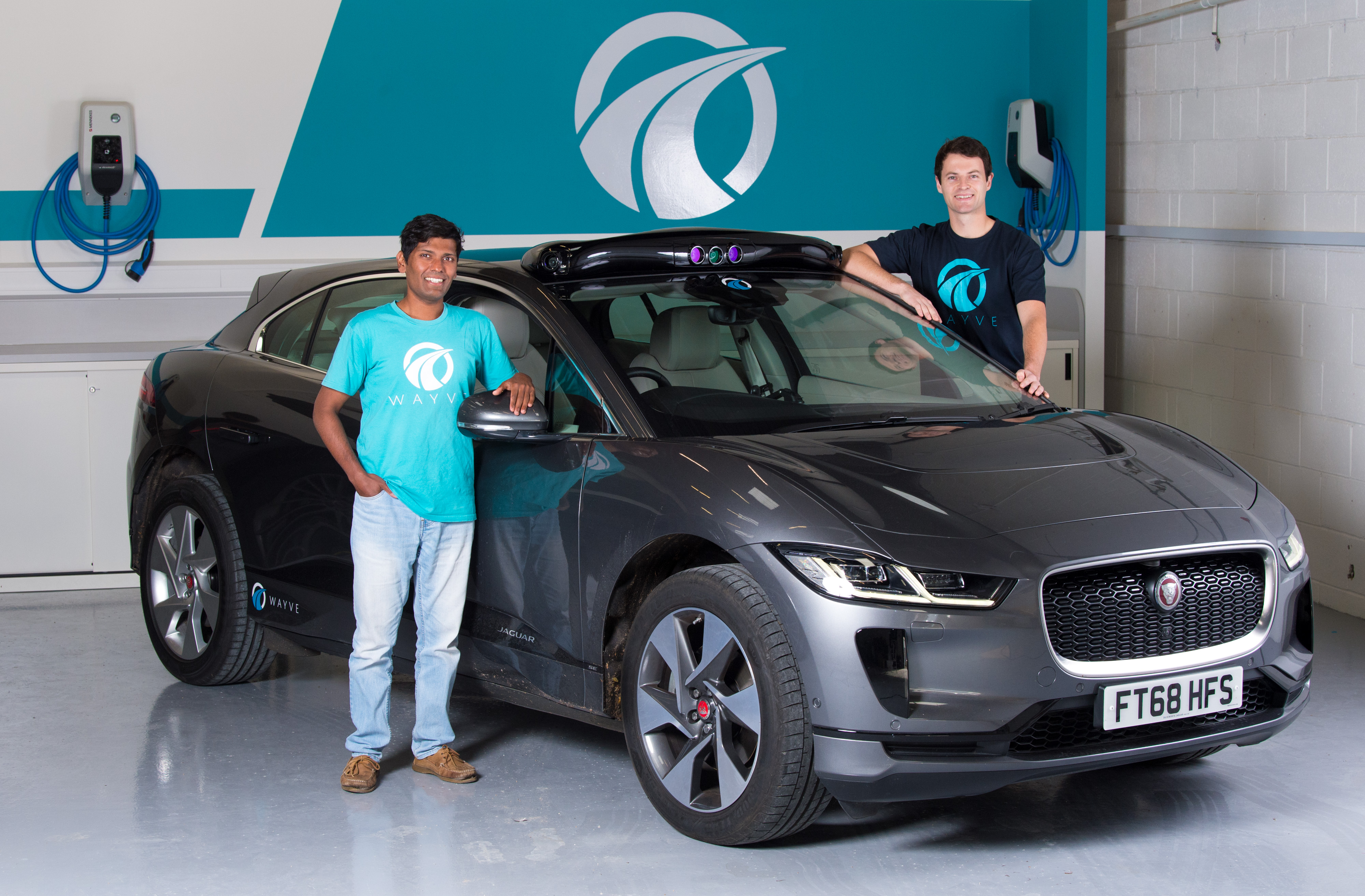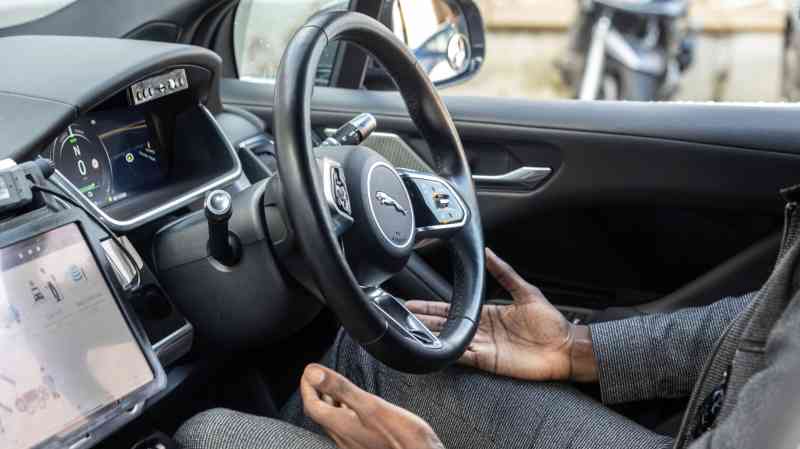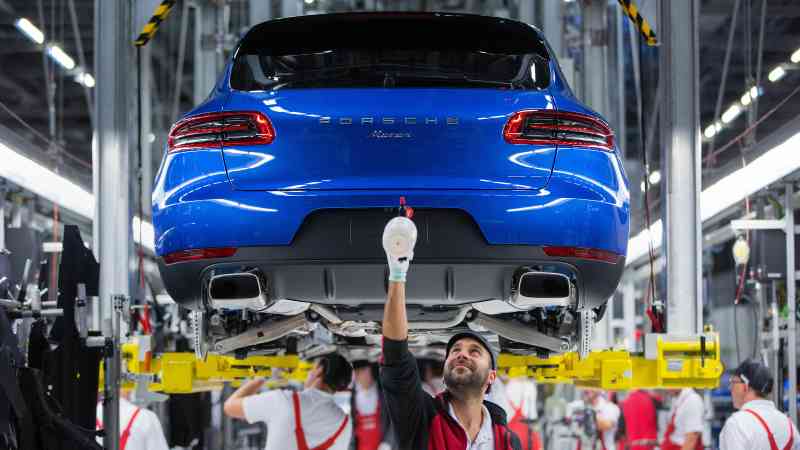AI’s road ahead from driverless cars to carbon capture
California’s citizens are used to self-driving cars, which have done millions of miles in trials. While progress has been far from smooth, it seems only a matter of time before the industry also picks up speed in the UK.
The UK government expects that the self-driving technology industry will be worth up to £42 billion and create 38,000 more skilled jobs by 2035.
Another infrastructure area ripe for development by AI companies is smart cities. The term — coined to describe using the wealth of data emerging from urban areas to improve them — was popularised back in 2008 when IBM explored the concept.
• Part one: AI and the creative sector
AI could unlock the full potential of smart cities, from more efficient water supply and waste control to better energy management and reduced traffic and pollution.
In the penultimate part of our series on the UK’s most promising AI companies, we speak to businesses working on self-driving cars, carbon capture and building management.

Wayve
In May this year, Wayve secured more than £800 million in a funding round led by Japan’s SoftBank to develop the next generation of AI-powered self-driving vehicles. It was the UK’s largest AI fundraising and was in the top 20 AI fundraisings globally at the time the money was raised.
However, the start-up, which was founded in a garage in 2017 by Alex Kendall and Amar Shah — both of whom have PhDs from Cambridge — sees its technology extending beyond self-driving cars. It believes its model could be employed in all sorts of systems, from warehouse robotics to humanoid robots.
There is, of course, a long way to go before then. One of the biggest problems facing any start-up developing AI is the “edge cases” — the sort of unusual events that might only happen once or twice to a human driver, who would know instinctively what to do in such a situation, while an AI model might not.
The company has employed several methods to manage these risks. It sees its “end-to-end” system — that is, based on software learning from the ground up rather than one relying on predefined human-made driving rules — as essential to allowing autonomous vehicles to generalise about events in real-world situations and make a sensible decision.
Kendall has called the technology “general purpose driving intelligence, agnostic to a specific vehicle or domain”.
Oxa
Oxa has its roots in Oxford University, where its two founders, Paul Newman and Ingmar Posner, led a project that eventually went on to spawn RobotCar, the first autonomous vehicle on UK roads. The pair used the technology behind RobotCar to found Oxa, then called Oxbotica, in 2014.
Oxa uses AI on top of a complex robotics model, the type that served as the foundation of the earlier models for self-driving cars.
While much of the attention autonomous vehicles have garnered to date has focused on so-called robo-taxis or personal passenger cars, Oxa also sees applications for the technology in other areas, such as goods delivery.
• Part two: AI and business services
“There are critical parts of how we live and the things that we rely on every single day of our lives that are being battered due to things like inflationary forces and the rise in fuel costs, and labour costs due to things like the shortage of human drivers,” Gavin Jackson, the company’s chief executive, said.
He added: “It’s really about fixing supply chains. It’s about moving goods around the world in a controllable way in a predictable way and giving an infinite supply of [drivers] for augmenting humans with software-driven vehicles.”
The company also sells its software to the logistics, energy and agriculture and transport industries. For example, electric autonomous passenger shuttles powered by Oxa software are being tested in a retirement community in California and it is also working on online grocery delivery vehicles with Ocado.

Infogrid
Infogrid collects and analyses data from buildings, including information on air quality, occupancy and energy consumption. This is used to help property managers and owners optimise the performance of their buildings, ensuring operating costs are kept as low as possible.
It was founded by William Cowell de Gruchy, a former British Army officer, in 2018. In April this year Kate Henningsen, co-founder of Arcadia, a climate technology company, joined as chief executive.
The idea of buildings using internet connections to share data is well established. However, the long-term nature of commercial property sales cycles can be a challenge when pitching AI.
“Real estate is a decision-making market that operates in 20-year time spans,” Henningsen said. “So people buy a building, they sign contracts to operate it and to hold it and to base return on investment off it. If you bring a solution to them, [they would say] I’ve already had my plan for 20 years. I don’t need this solution now.”
Luckily for Infogrid, post-pandemic inflation and the expected impact of the climate crisis on the electricity grid are forcing building managers and developers to think more about how to make their projects more efficient and sustainable.
Henningsen said: “The sophistication with which buildings are going to have to operate within the next five years [will mean the use of] software and AI.”
Sylvera
Co-founded in 2020 by Allister Furey and Sam Gill, Sylvera uses AI to evaluate carbon capture projects.
These projects, where companies invest in things such as forests to remove carbon equivalent to the emissions they produce, have proved increasingly contentious, with the difficulty in verifying the true carbon reductions achieved among the objections.
Sylvera set out to solve this problem, principally by using artificial intelligence to help investigate and verify claims made by projects.
Its challenges have included a lack of accurate data, an issue familiar to AI companies and which has been dubbed the “garbage in, garbage out” problem.
• Part three: AI and green technology
“The problem with forest and soil data is, firstly, there’s not enough of it,” Furey said. “The second thing is the data is terribly, terribly bad. It’s not just random error which all cancels out. There’s bias in the training data.”
The company obtains data from satellites and laser measurements of biomass “down to a twig the size of your finger”, Furey said. “So you get the exact volumetric measurement of wood in that forest.”
Clients include the financial services industry, which needs trusted data so that businesses have confidence to invest in sustainable assets.
Vortexa
Founded in 2016, Vortexa uses AI to provide accurate information on the energy freight market, forecasting where a particular tanker is heading or when it will arrive at its destination.
The information that Vortexa supplies, which also includes what type of fuel each of the thousands of tankers is carrying, is used to make the market more efficient, with the hope of ultimately lowering energy costs across the world.
One of the problems that Vortexa hopes to tackle is that industry data is rarely standardised, meaning that in the past, vast numbers of human transcribers have been required to make any use of freight data.
By employing generative AI, Vortexa has been able to parse and extract valuable information regardless of the consistency. Like many companies employing generative models, “hallucinations”, or false outputs, are something that Vortexa has to guard against, particularly when attempting to forecast the future path of a tanker.
“What do you do if your model predicts not just one destination, but 2,750-something destinations? Which one do you pick, which ones of them are hallucinated? That was a big challenge,” Maksym Schipka, the company’s chief technology officer, said.
Vortexa estimates the probability that each position is correct and, in a process said to be not dissimilar in the abstract to the unboxing of Schrodinger’s cat, then resolves all the potential options to the one most likely outcome, erasing forecasts that are either implausible or simply incorrect.






